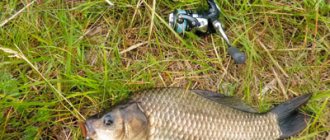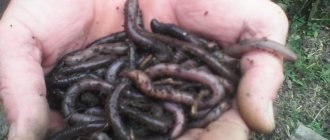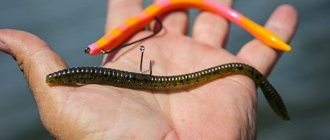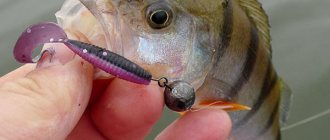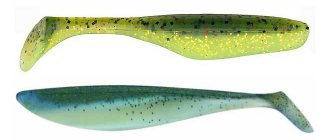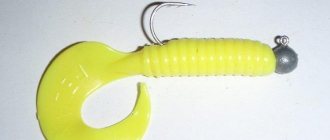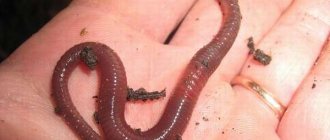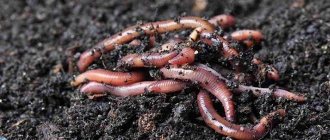Gummy worms are a favorite treat not only for children, but also for adults. However, few people know that modern worms contain various artificial additives, including dyes, thickeners and starch, which negatively affect human health.
But what to do if you really want to enjoy this sweetness? There is a way out - prepare the worms yourself using natural ingredients. The most common recipes and tips on how to make gummy worms at home are collected in this article.
Composition and origin of marmalade
Before you start preparing the treat, you should find out what these cute gummies include. Modern gummy worms contain: sugar, starch, gelatin, synthetic dyes and flavors. However, previously this sweetness was prepared exclusively from natural products. So, for example, in France, where chewing marmalade first appeared in the 18th century, it was made from quince and apples. According to some versions, the “ancestor” of marmalade is the oriental sweet Turkish delight, which for thousands of years was prepared from rose water, fruit, starch, honey and other natural ingredients.
In Europe, people learned about chewing marmalade only in the 14th century. Local chefs tried different ways of preparing this sweetness and thus came to the conclusion that quinces, apples and apricots should be used as the basis for marmalade. Only thanks to these fruits did the mixture acquire the desired consistency, as it turned out later, due to the substance they contained - pectin.
Homemade worm!
Good day, dear subscriber!
Perhaps this material will be interesting to someone, and for someone it will be a sensation, but I am not making any discovery, but will tell you about simple soil animals that “make” the soil, or rather are its creators, and without any pathogens.
As you may have guessed, we will talk about worms. People have different attitudes towards these soil animals - fishermen revere them as bait, some summer residents protect them, while others are simply afraid. In fact, these are harmless living beings on the planet, on which, by the way, the lives of other living beings, including ours, depend.
Yes, don’t be surprised, we are alive on our planet as long as the worms are alive. If they don't exist, we won't either. The point here is this. Worm droppings, as you know, are tiny lumps that we call humus. These humus particles contain many chemical elements, including elements of heavy metals, which are harmful in excess concentration.
I came across information of this nature on the Internet. Humus is divided into two components - the soluble part and the insoluble part. The soluble part of humus can be accessible to plant roots, but only if this humus is constantly moist. The insoluble part, which contains heavy metal salts, is not accessible to plant roots.
Whether this is true or not, I don’t know for sure. If we consider from the point of view that we are still alive from those times when humanity began to build industrial enterprises and invented the internal combustion engine, then perhaps this is so. Essentially, worm droppings protect us from toxic emissions from cars and factories. Wow!
Why is worm droppings sterile?
Yes, it's very simple. When a worm “eats,” it naturally swallows soil particles, organic elements, and with them soil microorganisms that are present on everything. And since the worm itself cannot swallow rough food (straw, blade of grass, leaf, shavings), soil microorganisms bring this food to the desired condition (something like crumb). This process can be compared to our life - “as if a toothless grandfather’s grandson is chewing a roll.”
In the digestive tube of the worm there are enzymes (simply digestive juices) that digest the entire incoming mass, including pathogenic microflora, and at the exit of this very digestive tube a sterile lump appears. It is only later, when it comes out of the worm and combines with the gases of the surrounding air, that it becomes an accumulator of harmful emissions, but at first it is even a very good “product.”
I was surfing the net here and found a photo for you. In my opinion, it clearly shows that these are not just soil animals, but even, on the contrary, they have a brain, which means they consciously do their eternal work of processing organic residues. That's the same!
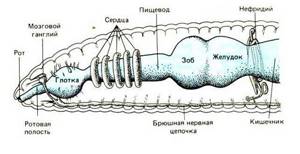
And one more thing... In fact, worms are not vegetarians, as it might seem at first glance, they are “meat eaters”, because the bodies of microorganisms that they “eat” are natural animal protein. No, of course, perhaps they don’t eat as much “meat” as humans or predatory animals eat, but still...
Once again I would like to draw your attention to the fact that I am not a scientist or an expert in the field of microbiology, biochemistry, etc. I found this information on the Internet and decided to share it with you, so to speak, for general development. Now I can imagine your state from what you read; I myself was so bewildered and delighted when I learned that worms give us life without demanding anything in return! This is how parsley turns out, dear friend.
Now I’ll tell you about my homemade worm trap. Why am I doing this and why?
Everything is simple here too. But the point here is that when the humus layer in the plot boxes grows higher and higher, I have to cut it off and throw it away. I do this so that the layer of mulch inside the box does not decrease over time due to the growth of the humus layer, but remains as it was initially.
Judge for yourself, at the moment when I just put the box on the soil, you can put mulch in it with a layer of 12-15-18 cm. After a few years, when the humus layer grows by several centimeters, for example, 5 cm, a layer of mulch is laid The mulch will already be thinner by the same 5 cm. But I need the layer of organic mulch to be the same, so I take the humus layer out into the forest, and the neighbors sort it out into their plots as needed.
So, when I cut off this humus layer, worms inevitably fall under the shovel, although before cutting off the soil layer, I knock on this very soil with the shovel so that the worms are “scared” and crawl lower into their holes. No matter how hard I try, several worms are still cut by a shovel and I feel uneasy from such a picture.
Therefore, from time to time I try to restore the “stock” of worms to the best of my ability. And since I can do this procedure, I do it very simply, I bring home either the cocoons or the worms themselves and create simple conditions for them to “live.” First, about cocoons (watch the video)…
The photos show a little closer to the cocoons themselves.
I have this worm machine on the landing in the “dressing room”, which is fenced off by two apartments from the total area of the staircase. There is also an eggplant there, although already half empty, with my infusion of EM-elixir.
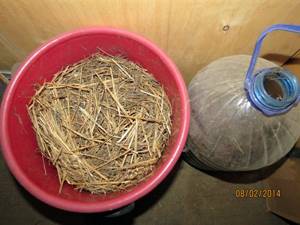
Besides, look what happens. Since worms are hermaphrodites, like slugs, there is no need to catch or select the worms, dividing them into “boys and girls”. It is enough to put TWO individuals in the worm bin, and offspring from them is guaranteed. But it’s better, of course, to take a dozen or two, then there will be a hundred times more of these offspring.
And so that the mulch lying in the bucket (straw, hay, leaves, sawdust or something else) undergoes preliminary digestive treatment, I occasionally moisten both the mulch and the soil with my Elixir infusion, which contains precisely those microorganisms that are involved in the digestion of these organic residues.
I also found a video that we shot in the summer of 2012 and it’s about a crawling creature, watch it... There is no need to be afraid of them, they are harmless creatures and will not bring any harm to us or the world around us, and even vice versa. Most likely, you need to beware of another animal that walks on two limbs...
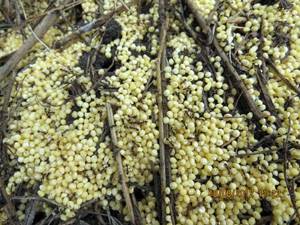
The ants then safely moved somewhere and continued their life activities for the benefit of the soil and plants. These insects should also not be feared or destroyed under any circumstances, because they are part of the ecosystem of our dacha or garden plot. They just need to be politely expelled from their homes (in my particular case, away from the apple tree) using ordinary millet.
Now I’ll tell you about the worms themselves, but not in a worm bin, but in flower pots where a tomato plant of the “Plovdiv Karotina” variety grows. The seeds of this variety were sent to me from Bulgaria by my dear subscriber, Rositsa. And since in the fall it was possible to take one plant home because it was underdeveloped, I planted it in a flower pot and placed a family of worms there.
This is at the dacha...
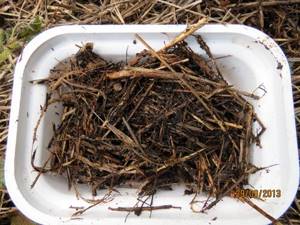
And this is already at home...
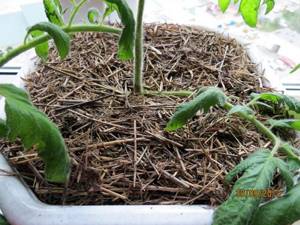
After the tomato plant grows old and dies, I will take this pot to the dacha and release an “army of diggers” into different plots - let them “drill” the soil. It is these soil animals that are capable of “drilling” (making) so many holes in the soil that we never dreamed of.
What are these holes for?
In order for chemical reactions to take place in them to create the necessary nutrients for our plants. Don't understand what we're talking about? Now I’ll tell you how I understand it myself. Look, it's very simple. As you and I know from the information on the World Wide Web, the roots of our plants can deliver nutrition to the above-ground part (trunk, branches and leaves) of the plant by absorbing liquids.
It is precisely in these worm holes (possibly in other soil voids and capillaries) that one of the miracles occurs - the combination of air gases and soil moisture, and as a result, salts and acids of these same air gases are obtained. And when nutrition is created, the plant has no choice but to consume the necessary nutritional element for its development.
This suggests a conclusion - the more of these same holes there are in the soil, the more diverse and accessible ANY nutritional element will be for ANY plant at a specific moment in its development. You see what's the matter. The plant does not “eat” all the nutrients at once, it uses them selectively.
That is, at the time the eyes open, in early spring, the plant needs only nutrients; in summer, at the height of growth and flowering - others; and in the fall, at the time of ripening of the crop and perennial wood - the third. In addition, from TV programs I learned that plants not only have MEMORY, but also know how to THINK, but not with their heads, like us, but with their roots.
In other words (in a simple way) you can put it this way. Whatever nutritional element is needed for a plant at a particular moment of development is absorbed by the roots, and the remaining elements are blocked. This is a proven fact, and, in fact, there was no need to prove anything, although for greater confidence and our knowledge of the plant world, scientists conducted such experiments and obtained results that are reflected in many printed materials and on TV. If you have the desire, then finding this information will not be difficult - everyone has a search engine at hand.
And allow me to finish the story about my worm farm for the reproduction of very necessary and useful soil animals. In conclusion, I want to say one thing - keep and cherish these creatures and feed them for slaughter, and they, in turn, will process organic residues, disinfect the soil and “drill” the necessary (and, in fact, necessary) holes in the soil of each dacha or garden plot!
When the time comes to take the worm farm to the dacha, I will certainly make a video about what was born there and I will inform you about it.
That's all for sure now.
Goodbye!
With best wishes, Sergey Dyakov.
089
Gummy worms at home
To be sure of the quality and naturalness of your favorite delicacy, you can prepare it yourself, especially since this does not require much time and effort. There are many recipes for making this sweet, let’s look at the most popular ones.
So how do you make gummy worms? To do this you will need the following ingredients:
- 2 bags of gelatin;
- 500 grams of cherry or any other fruit and berry puree;
- 200 grams of sugar;
- water;
- natural dyes if desired.
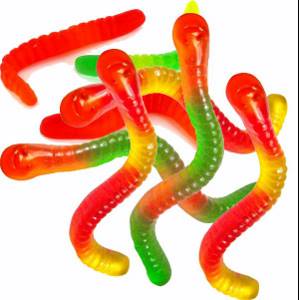
You need to dilute the gelatin with water and let it swell. Strain the puree through cheesecloth into a saucepan, add sugar to it and boil until it is completely dissolved. Pour gelatin into the boiling syrup and wait until it dissolves.
To form the worms you will need parchment. Roll the paper into tubes and place them in a shallow pan, close to each other. Pour the gelatin mass into the tubes and wait until it hardens completely. Delicious homemade gummy worms are ready! All that remains is to open the parchment and take out the finished product.
Gummy worm prank
Jelly worms are convenient for playing various pranks. These could be competitions or disputes. Imagine eating an earthworm for a bet! The most important thing is that the contestant does not immediately guess that it is a jelly worm made from plum juice)))
Jelly worms are perfect for Halloween celebrations. Imagine a beautifully decorated worm cake, worm cookies, or a plate with a handful of fun gummy worms. Guests will be delighted!
Unusual recipe
Those who have already searched the Internet for information on how to make gummy worms at home have more than once seen an unusual technology for preparing this beetroot delicacy. These worms turn out to be tasty, healthy and kids will definitely like them. To prepare them you will need:
- 600 grams of beets;
- 30 ml lemon juice;
- 10 g ginger root;
- 120 ml apple juice;
- 100 grams of sugar;
- 24 grams of pectin.
Wash the beets, wrap in foil and place in the oven for 80 minutes. Throughout baking, the oven temperature should be 200 degrees. Cool the finished beets and grind in a blender until pureed. Grate the apples on a coarse grater and place on cheesecloth. Squeeze the apple juice through it and add it to the beet puree.

Finely grate the ginger root, mix with lemon juice, and add the resulting mixture to the rest of the puree. Add pectin, stir, put on the stove, bring to a boil. Add sugar to the prepared liquid and simmer for another five minutes.
Place cocktail tubes in a separate container and pour the sweet mixture into them. Place the resulting “worms” in the refrigerator for three hours.
